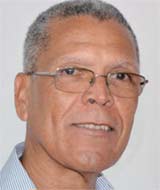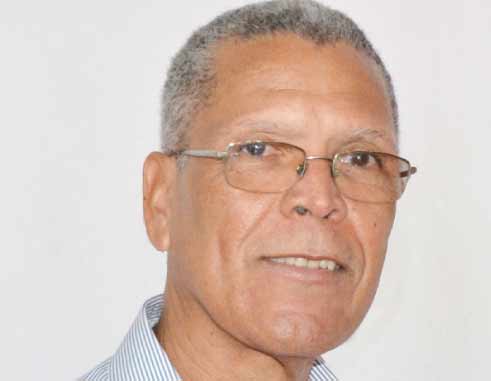
AS we continue to examine Teo Ah Khing, we turn our attention to the record of performance of the architectural firm which he formed and currently heads, a record which our Government repeatedly describes to us as “well-respected”.
When Ah Khing and DSH were introduced to the country last year, I took both parties at face value and simply reported the information available on the TAK website, which was that the firm had completed several projects in Dubai, the last of which had been the design of a racecourse for the Ruler of Dubai.
We mentioned as well AhKhing’s involvement with the China Horse Club, that private club where membership supposedly starts at US$1 million, and concluded in an earlier article that Ah Khing “seems to be a successful businessman who has developed a love for horses and horseracing, and aims to introduce the sport to China.” In that article, though, we questioned why Ah Khing would then want to become involved with St. Lucia.
It was only subsequent to the leaking of the Framework and Supplemental Agreements governing this project, the Opposition’s objection to the arrangements contained in them, and the Prime Minister’s subsequent confirmation of the authenticity of the documents that we turned our attention to the DSH proposal in some detail. Even then, we were at pains to make the point that our technocrats had failed us miserably, but that our politicians had done an even better job of misleading us and mismanaging our business.
And so it was really the examination of ourselves, and not any particular interest in either DSH or Ah Khing, which led to the interest in the DSH proposals for Vieux Fort. But as the details emerged, one could not help but wonder just who had masterminded this grand-scale enticement which has so bemused our Government. Now, we take a look at TAK and Ah Khing himself, but only so that we can come to a better understanding of ourselves, and of what, as a people, we are forced to tolerate.
The first thing that becomes obvious about Ah Khing, DSH and the China Horse Club is that they are very good at disseminating information. Even when that information is, however, not strictly accurate, it is not corrected, so that even now a visit to the China Horse Club website will display the information of the signature DSH development, Tianjin Equine Culture City. There is no further information available about this project on that website, but as far as we have been able to gather from public information, construction of this project has not started seven years after it has been announced. Our Government, however, still relies on this project as evidence of DSH’s track record.
But this propensity to advertise works two ways, and so, following the sod-turning ceremony for the DSH project in Vieux Fort in November 2016, the China Horse Club website reported on the ceremony. That report indicated that two Chinese contractors were present at that ceremony and that one of them had signed a memorandum of understanding with the government the next day.
For those of us having an association with the construction industry, any mention of Chinese contractors participating on projects in the region excites interest as Chinese contractors have a varied record of performance on the larger projects on which they have been engaged. Trinidad and Tobago provides some notable examples of this with the multiple design and construction issues arising on their cultural building in Port-of-Spain on which a Chinese contractor was engaged, and the recent termination of another Chinese contractor on the UWI campus extension project.
One of the marked advantages of Chinese contractors, however, is that they are either owned or supported by the Chinese government and so have access to financing for their projects through the Chinese government-controlled Export-Import Bank of China. In the case of China State Construction Engineering Corporation, the company which recently signed that memorandum of understanding with the Government of St. Lucia, that company is owned by the government of China and in 2009 was able to access US$2.5 billion in co-funding for the construction of the Baha Mar resort in the Bahamas.
The failure of this project has previously been described in this newspaper by Dr. Anderson Reynolds in his article published on February 2 this year. Dr. Reynold’s article described the preferred status of the contractor whose selection was tied to the financing of the project, the engagement of Chinese labour for construction, and the article went on to summarize the reasons for the failure of this project. With our somewhat different focus, however, a little more detail might be helpful.
According to a New York Times article of February 2, 2016, which draws on court proceedings, the developer of this Bahamas project claimed that the contractor “failed to maintain adequate staffing, provide proper schedules or follow-through on a promise to bring in partners with the experience needed to build such a complex project”. In its defense, the contractor claimed that “the developer had mismanaged the project, requesting multiple design changes that created cost overruns.” This represents a fairly standard construction dispute, but from the contractor’s defense, what appears not to be in any dispute is the issue of cost overruns on the project.
The litigation history of contractors is, however, relevant at the pre-qualification stage for contractors tendering on projects, and evidence of excessive litigation can be grounds for exclusion of a contractor from the final list of pre-qualified contractors. And so, when China State Construction Engineering Corporation showed up at the sod-turning ceremony for the DSH project in Vieux Fort and then signed that memorandum of understanding with the Government, the immediate question which arose was: “Why this company?” Why does China State Construction Engineering Corporation with its troubled history in the Bahamas not only show up on our doorstep, but then goes on to be received by our Government with welcoming arms?
As it turns out, at about the same time in 2009 that China State Construction Engineering Corporation was engaged on the Bahamas hotel development, that company was also engaged on construction of the grandstand for the Meydan horseracing complex, which, as we know, is the signature horseracing project for TAK Consultants. It is possible that the relationship between contractor and consultant which developed during the course of this project resulted in CSCEC being present in Vieux Fort with TAK, but it is the story of how this company came to be engaged on the Meydan project and TAK’s involvement with continuing works after CSCEC’s contract had been completed which requires our attention.
For some of us who are concerned that it may be taking too long for a solution to be offered, it is our hope that by simply presenting the facts, the real nature of our problem will become evident. What we are currently examining are only the by-products of this problem and it our hope also that by discussing the gap between the truth and what we are being told by our Government, we will eventually find the courage to finally address our future.
That gap in truth is, however, more often than not a subtle distortion of the facts. So that when our Government tells us of DSH’s “well-respected track record”, its has also told us that DSH’s “expertise stems from the work experiences of its principal Teo Ah Khing in equine facilities design and development”. Government, however, does not tell us whether that “well-respected track record” is due to the principal’s expertise in architecture, in his functioning as a Client’s Representative, or as a Project Manager. Now, in the case of the DSH project, Mr. Ah Khing and DSH propose to function in the role of a developer. Yet we have not been able to unearth any of those projects which have been constructed by Mr. Ah Khing or DSH which would have provided them with a track record in development.
Similarly, at the recent signing ceremony held at Sandals Grande for the second phase of the DSH project, we were simply told by the Minister for Economic Development that he had confidence in the developer, as if such a statement had its own validity – the Government has confidence and, therefore, so should we. But we are given nothing that would substantiate that confidence and there is now the chilling realization that we should expect nothing.
Teo Ah Khing has produced, by all accounts, a spectacular architectural design for the grandstand of the Meydan racecourse in Dubai and he designed the associated hotel and car park, among other facilities. The construction stage of this and related projects on which TAK Consultants was engaged is, however, another matter, and that story is instructive.
Next week, Part 2 presents that story.














1 Comment